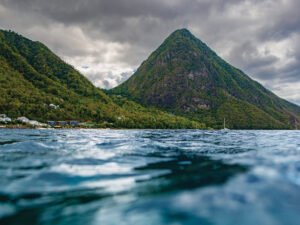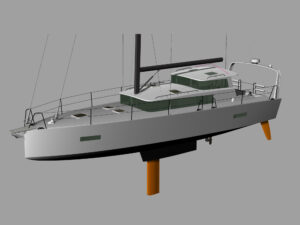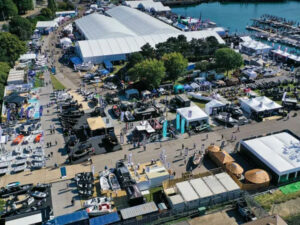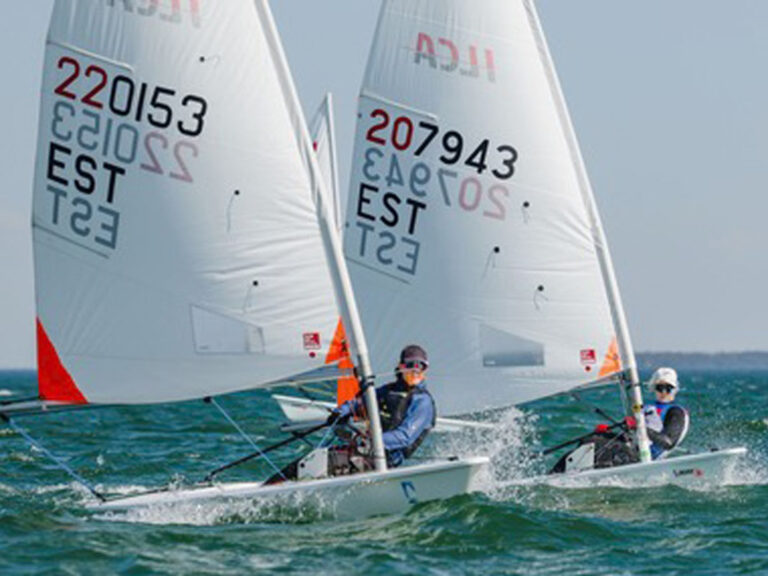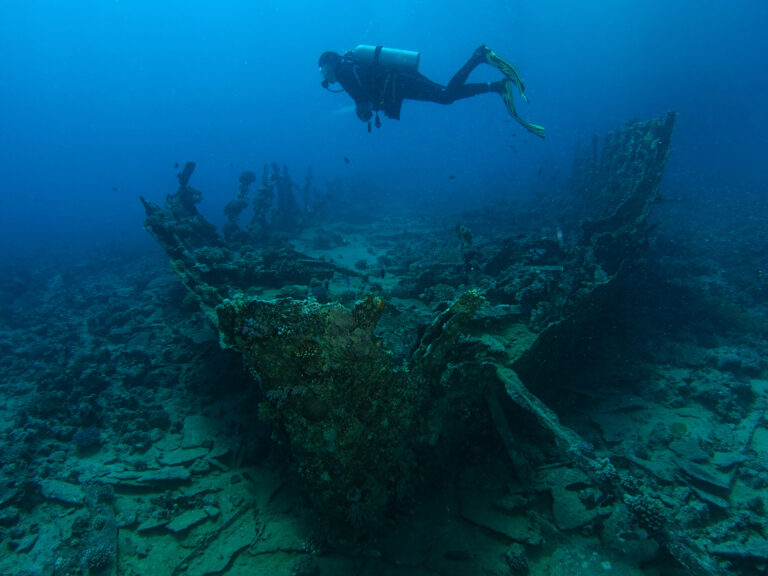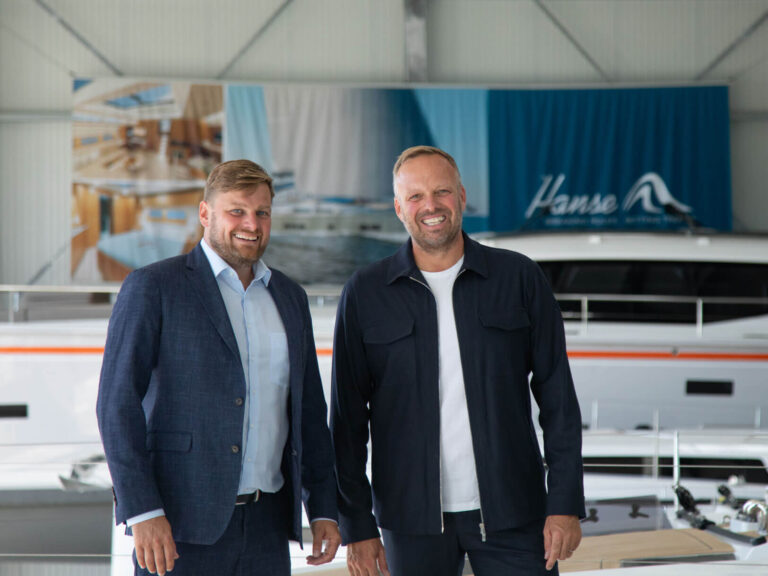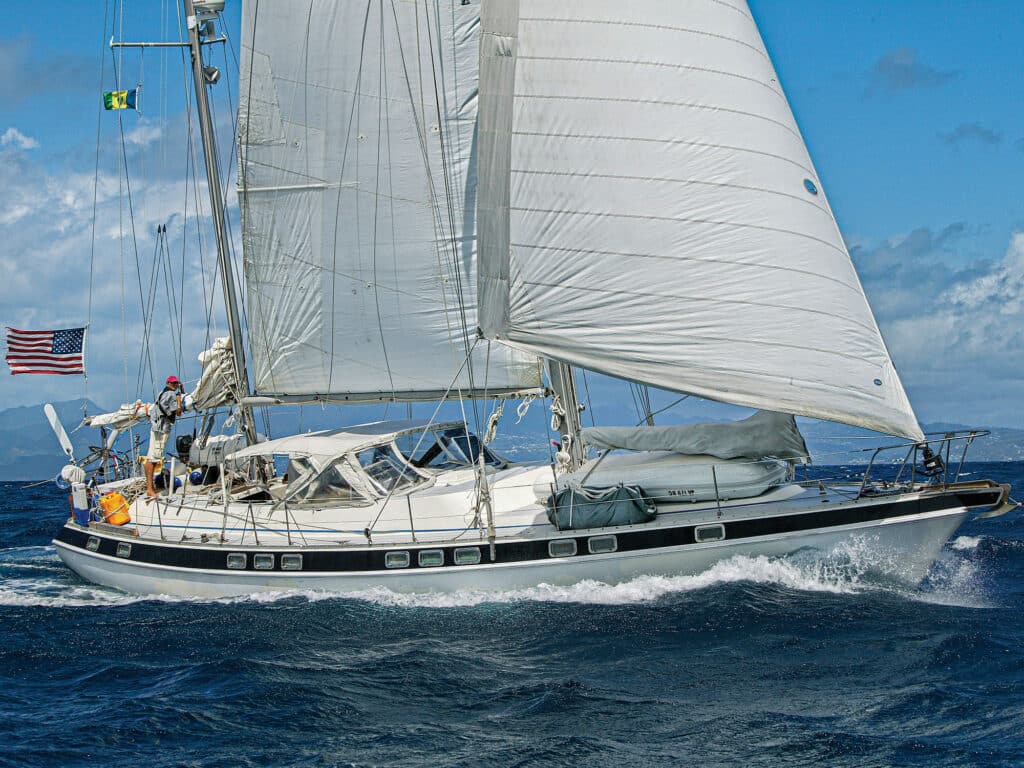
When Joan Conover arrives at Fiddler’s Green, the promised land for departed mariners, she’ll look back on an Earth better for having sailed it.
Long before she took the helm of the Seven Seas Cruising Association, Conover was practicing one of SSCA’s founding principles: Leave a clean wake. On board, on land and on the airwaves, few have done as much as Conover to marshal the better angels of our privileged fleet.
On her first trans-Atlantic in 2005, she and her daughter, Christina, took daily dips of marine life—160 samples—all the way to Portugal. They froze and shipped them to Old Dominion University to establish an oceanwide baseline to gauge signs of degradation. Christina, a high school graduate at the time, became an oceanographer.
In the years since, amid 35,000 cruising miles, Joan and her husband, Greg, have helped organize sailors to improve lives, harbors, and communities in Haiti, Guatemala, Honduras, and Dominica, all tropical destinations that suffer from storms, flooding, bad sanitation, poverty, poor health, and the social and environmental impacts of yachts.
In 2007, some 11 years after joining SSCA, Joan took over administering Clean Wake, a program that SSCA’s founding sailors created to promote environmental and social stewardship. Joan has made the program a core focus of her presidency. “I liked their philosophy, written before many of the green or climate-change issues were raised,” she says. “It was obvious you need to protect the Earth because we have a tendency to mess things up.”
Joan first went to sea as a 12-year-old girl, crewing on her Norwegian grandfather’s salmon fishing boat in Puget Sound. “I’m not afraid of big seas—not if you’ve been in an old leaky wooden trawler,” she says. After marrying Greg, a US Army tank officer, they adopted Josh, a special-needs child who found water comforting. When Greg was assigned to Fort Hood, she told him, “I’d like to get a sailboat because it would be a family activity we could all do—in the middle of Texas,” she recalls. “Greg, who had not sailed before, called it ‘the craziest thing.’ Two weeks later, we had a sailboat. Josh loved it.” Stillhouse Hollow Lake, a reservoir that borders the base, was ideal for their 22-foot daysailer.
When Greg was reassigned to the East Coast, they bought a used Morgan 41 and got their sea legs on Chesapeake Bay. In 1989, they used $50,000 in cash to trade up for a 1976 Morgan Out Island 51 that Hurricane Hugo had tossed around in the Isle of Palms Marina in Charleston, South Carolina.
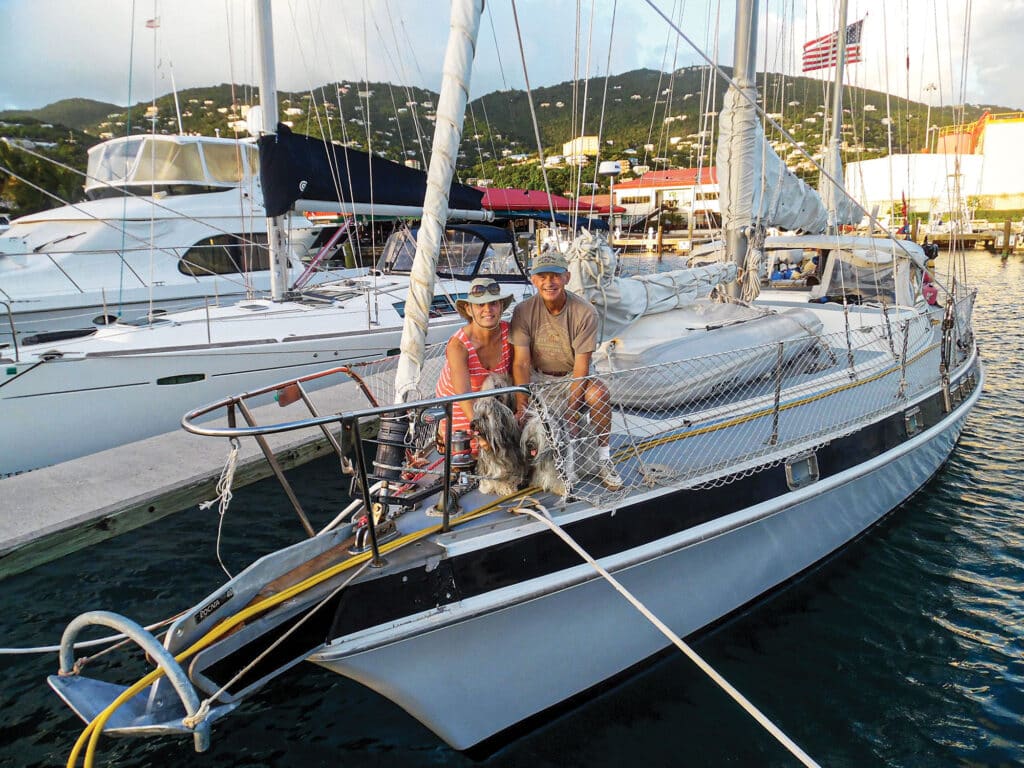
“Let me tell you: A 1970s shag carpet is not good on a boat,” she says. “It was orange and green. You’d get seasick when you came in.” They renamed that boat after a colorful, disheveled character in the musical Cats.
But it was built like a tank, and so roomy that it had a tub. Growltiger underwent a major refit: a 700-gallon-a-day watermaker, a washer-dryer, an autopilot, a generator, big house batteries, an electrical system and running rigging. Then, in 2005, they set out on a trans-Atlantic with their two college-age children and a mate. Over the years, they’ve rebuilt the engine, replaced ports with stainless steel, and replaced the hatches, sails, standing rigging and, more recently, the entire deck. The tub, Joan hastens to add, is used to stow stuff.
With a home port in Hampton, Virginia, and healthy retirement and savings accounts, the Conovers have been sailing back and forth seasonally to the Caribbean for 15 years. Josh and their Havanese show dogs go with them. But unlike most cruising conversations that focus on Caribbean delights, a talk with Joan is peppered with good deeds they’ve had a hand in.
There are the moorings in Dominica’s Prince Rupert Bay to reduce coral destruction. And the water filters, paint, shovels, stoves and a braille keyboard for a blind boy in Rio Dulce, Guatemala. The boat acted as a “pickup truck” to ferry supplies from Antigua to Dominica after Hurricane Maria. When a 2010 earthquake devastated Haiti, Joan used the internet, cellphones and her ham radio to coordinate sailors who traveled there to help.
Joan is a plain-spoken woman with a broad smile who describes poor children as kindred souls. “They should be in advanced-degree programs,” she says, “and you know that’s not going to happen.”
Back home, her tall SSB radio antenna behind the house beams communications with SSCA’s port hosts worldwide. And every fall, as cruisers gather around Cape Hatteras, North Carolina, before heading south, she becomes a mother hen/drill instructor/tech expert to keep them safe. As a patent-holding systems engineer who is facile with radios, weather and terrain, she briefs rallies and then stands by to respond to inevitable calls for help.
Every year, boats set sail with new-to-them equipment—what she calls “wonderful little toys from a boat show”—that she helps troubleshoot from her radio room. “I decided my give-back was to help people stay connected, if that meant the best satellite or tracking system, be it Iridium, inReach, Zoleo, Starlink, SSB, PredictWind—whatever they had—to make sure they could stay in touch. I don’t think people realize how important it is from Hatteras down to the Virgin Islands to at least be in touch, or be tracked.”
At 74, Joan says she’s getting to the end of her sailing years, and she’s working to pass the Clean Wake philosophy to a new generation of cruisers.
“I guess it’s the human drive,” she says. “A lot of us have it. Some don’t. If we didn’t have a focus of going in and finding what we might do when we arrived in port, I don’t know that I would be interested in going. I don’t go just for the passage. I go for the experience after you get there.”
For a list of sanctioned SSCA Clean Wake projects, visit ssca.org.

